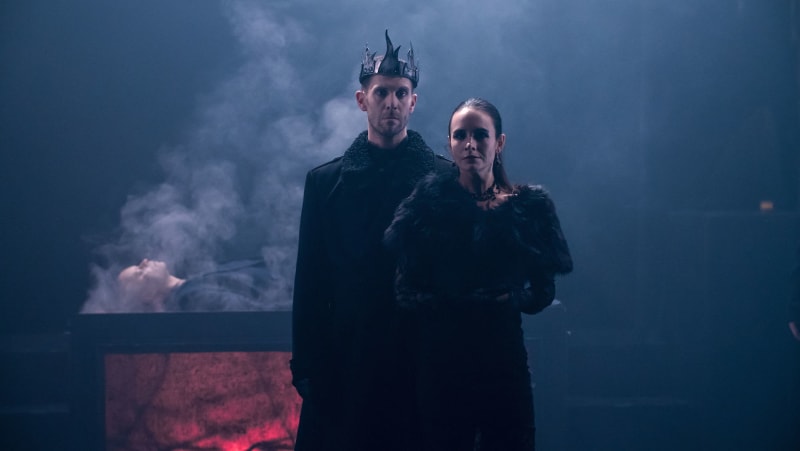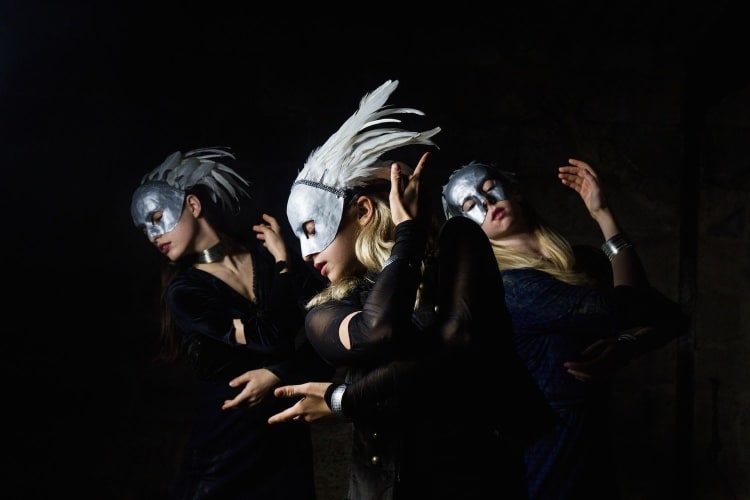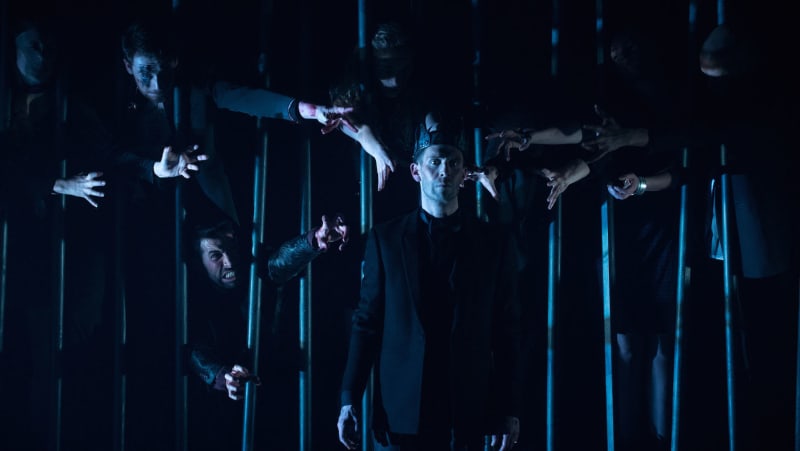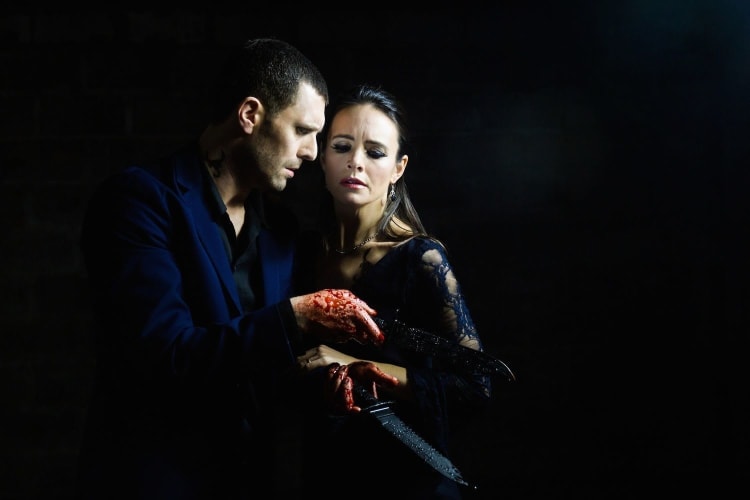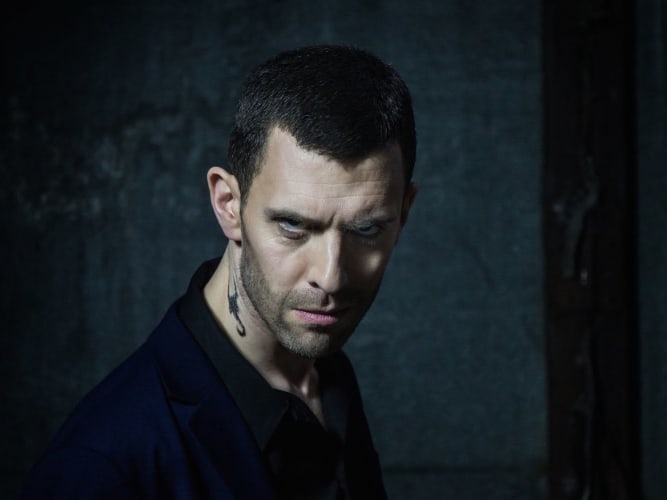This isn’t Shakespeare but a dance work inspired by “the Scottish play” boldly choreographed by Mark Bruce for his own company. Shorn of text and verbal poetry, the story is told through movement and emotion concentrating on the outline of the plot and the character of the protagonists.
Bruce is a choreographer whose strengths are a bold theatricality and expression of feeling and where Shakespeare has a thoughtful soliloquy he digs into its heart and distils its primary content into physical form. He sets it against a score in which music by Arvo Pärt is mixed with pieces by Ligeti and Penderecki, brief passages by Schubert and Schnittke and the even more violent sound of US rock band Sonic Youth as the witches writhe in orgasmic trance.
This is a Scotland of swirling mists and tattooed bodies. Its black-clad figures may fight with swords and knives but there are high-rise buildings on the horizon and its witches are no “black and midnight hags” but young women in short skirts, their limbs and faces decorated by the inky needle.
They open the action silver-masked and head-plumed but cast this elegance aside as they become possessed then disappear in sudden darkness (made blacker by dazzling a row of bright light beads across the stage front) from which each new scene appears. Their prophecies are clearly presented with badges of office, a crown and babies.
We see Macbeth’s fight against the rebels. He rips the badge of office from their leader before he severs his head, an episode that has a matching bookend battle when Macbeth is defeated.
Eleanor Duval’s Lady Macbeth looks elegant, but there is sometimes an awkwardness about her movement that suggests she’s evil from the moment she receives the letter from Macbeth telling what the witches promised she is plotting murder. Shakespeare’s “unsex me here” becomes a savage plucking at her belly but she maintains her composure until after she sees her husband weakened, their triumph threatened, when a solo shows her descent into madness that precedes an equivalent of the sleepwalking scene.
When Macbeth joins his Lady, Bruce has devised a passionate pas de deux but Macbeth has scruples. In a swirling solo, Jonathan Goddard hesitates before a dagger Lady Macbeth has placed there even before he sees one in the air. We see things that Shakespeare places offstage as she gives King Duncan’s attendants an instant-acting potion, nearly kills the King herself before goading Macbeth forward. There is another strongly choreographed sequence with both bloody handed after the murder.
You can’t avoid the gore in Macbeth and there is much more to come. A high point in the work is a duo for Macbeth and Banquo when he sees the ghost of the former friend whom he has murdered, excitingly danced by Goddard and Jordi Calpe Serrats. The strength of the male dancing helps make this powerful theatre, especially Goddard’s high spiralling leaps, it seems driven by Pärt’s pounding music, and Guy Hoare’s lighting adds extra drama and Bruce makes his effects through his strong sense of theatre as well as his bold choreography.
